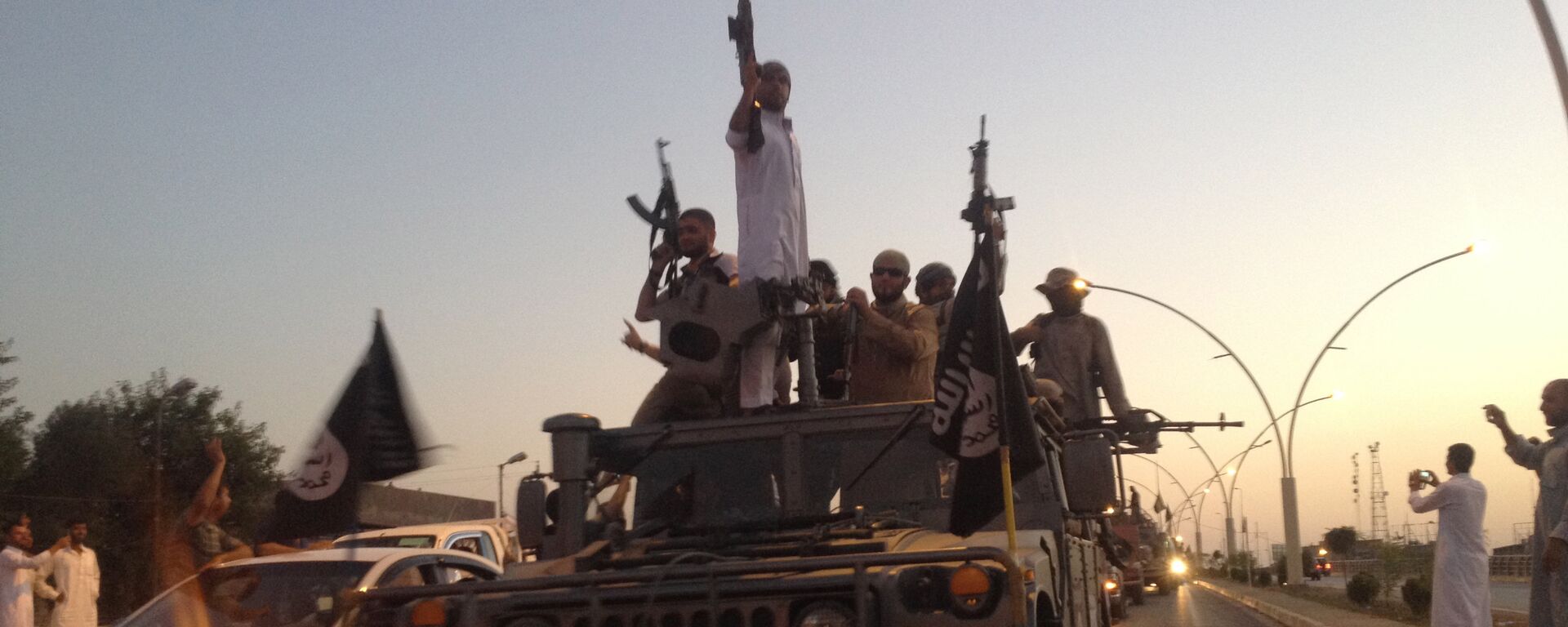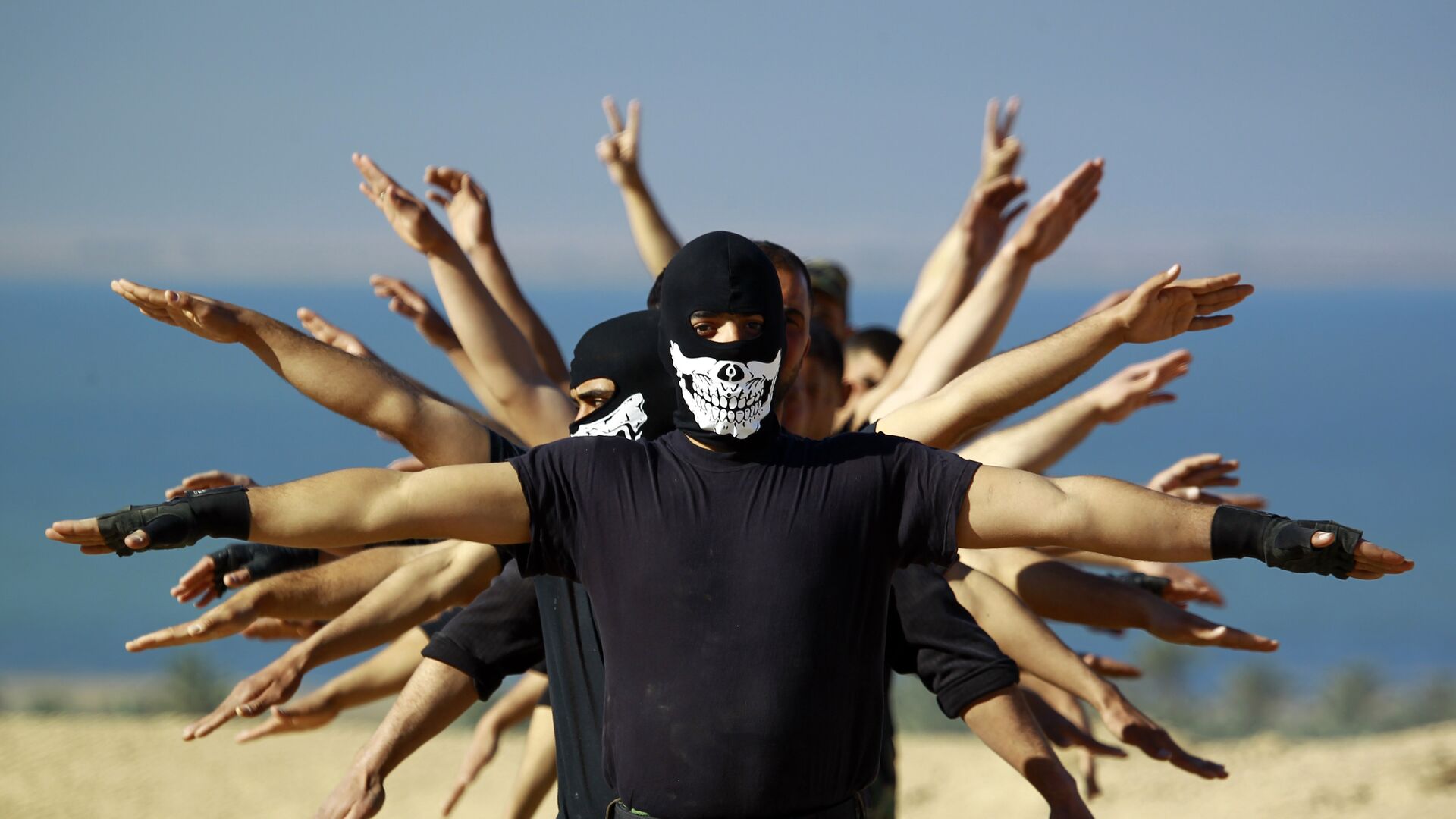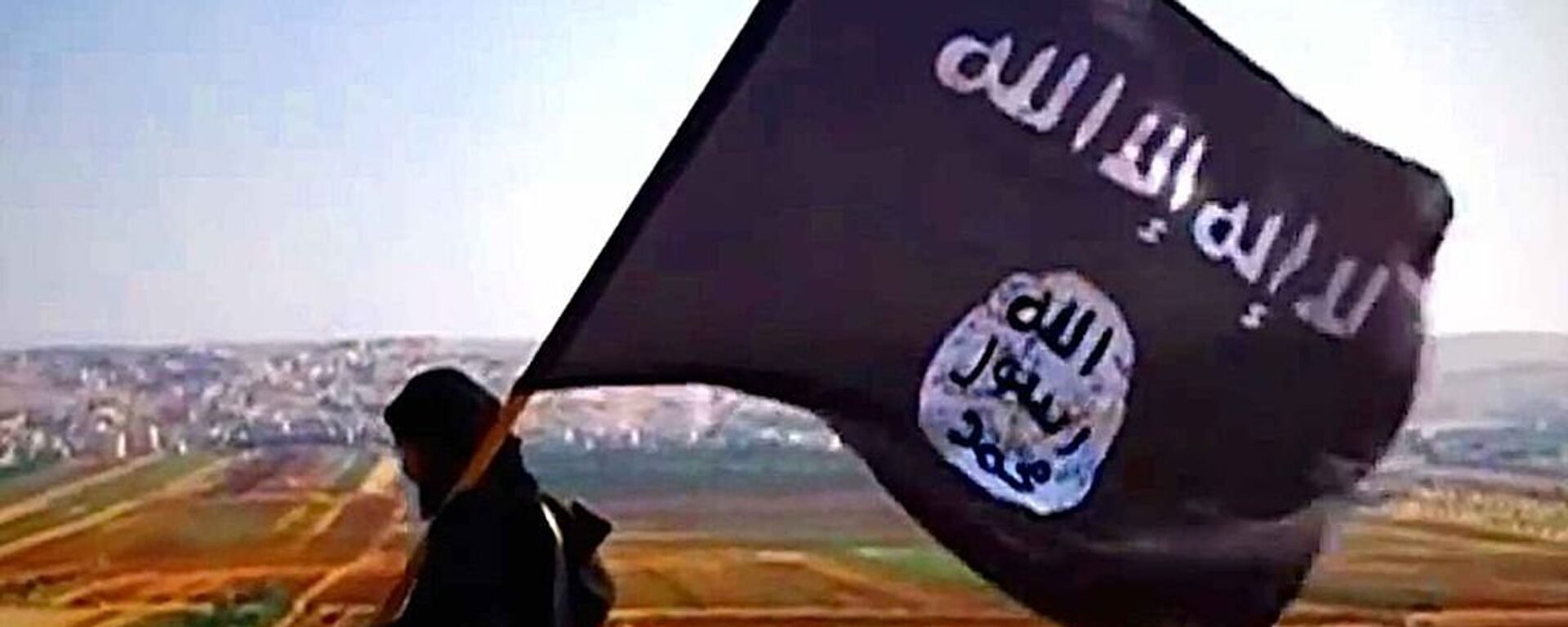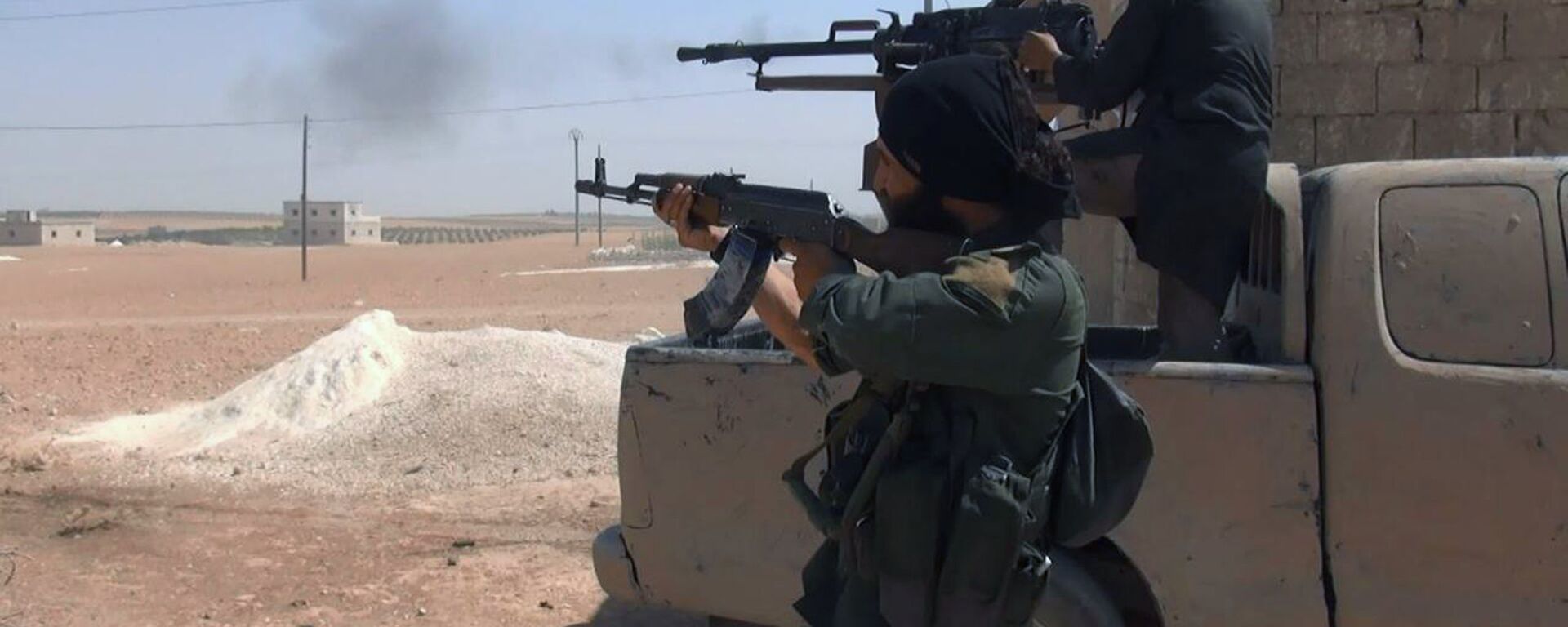https://sputnikglobe.com/20240328/the-us-and-islamists-a-history-of-connivance-1117611979.html
The US and Islamists: a History of Connivance
The US and Islamists: a History of Connivance
Sputnik International
As the United States and allies refute any discussion of their connections to the terrorist attack in Moscow, one should be reminded of a historic fact: in all major wars of the last 45 years the U.S. and allies played into the hands of Islamists.
2024-03-28T18:41+0000
2024-03-28T18:41+0000
2024-03-28T18:41+0000
world
bashar assad
muammar gaddafi
zbigniew brzezinski
nato
islamists
libya
syria
afghanistan
https://cdn1.img.sputnikglobe.com/img/101942/02/1019420272_0:0:4896:2754_1920x0_80_0_0_21197cd1d3c09bbd07889470aeb30095.jpg
Western politicians and mainstream media maintain the narrative that the terrorist attack on innocent concert-goers at the Crocus City concert hall was solely orchestrated and executed by ISIS*.The branch of the terrorist group, which previously had been active mostly in Afghanistan and Pakistan, is named ISIS-Khorasan*.The Russian officials do not dispute that the actual killing was done by radical Islamists. However, President Vladimir Putin said the real question is who ordered the attack.Meanwhile, law enforcement agencies and investigators point to direct links between the terrorists and Ukraine, implicating the United States and its allies as potential beneficiaries. But any attempt to challenge or question the narrative of ‘strictly Islamist’ nature of the terrorist attack is portrayed by Western mainstream media and politicians as deliberate distortions of truth in Russia's political favor.“We invite Russia not to instrumentalize this attack. There is no evidence whatsoever of any involvement on the Ukrainian side,” said Italy’s foreign minister Antonio Tajani — downplaying the fact that the terrorists tried to flee to Western ally Ukraine, viewing it as a safe haven.Denying the involvement of its client-state Ukraine in the crime, the Western media stresses the difference between the “humane” West and the brutal ISIS. However, a closer look at recent history shows that the US and their allies often 'instrumentalized' the Islamist militants for their own ends. Three well documented examples are the wars in Afghanistan, Libya and Syria.AfghanistanDuring the so-called “Soviet stage” of the endless war in Afghanistan in 1979-1989, the US collaboration with the jihadist fighters against the pro-Soviet Afghan government and the Soviet army in Afghanistan was so obvious, it was only formally denied by Washington. Later on volumes were written about “operation Cyclone” — the code name for the CIA’s covert program to arm and finance the Afghan mujahedin between 1979 and 1992.“The CIA acted as the war’s quartermaster, arranging supplies of weapons to mujahedin,” wrote historian Conor Tobin from the University College Dublin in his book “The United States and the Soviet-Afghan War, 1979-1989,” published in 2020.US aid to the Afghan mujahideen, whose leaders were later accused by Human Right Watch of murdering tens of thousands of Afghans in the 1990s, is now recognized and documented by US government as a historical fact.”US aid to mujahedin started flowing in July 1979, six months before December 1979,” writes historian Julie Lowenstein from Yale University in her book ‘US Foreign Policy and the Soviet-Afghan war’. “Zbigniew Brzezinski admitted in his interview in 1998 that this financing increased the probability of a Soviet attack. This attack was not a catastrophe for US foreign interests, but rather a result of a successful American provocation.”In the same interview to Le Nouvel Observateur in 1998, Zbigniew Brzezinski, who in 1979 was president Carter’s National Security Advisor, explained that the idea was to make Afghanistan “a Soviet Vietnam,” pitting against Russia young Islamist fanatics not only from Afghanistan but also from other countries.LibyaThe intervention by the US and its allies in Libya in 2011 is the second-best documented example of collaboration between the West and Islamist movements. The collapse of the revolutionary state founded by former leader Muammar Gaddafi under NATO’s bombs cost Libya 10 years of civil wars and at least 25,000 dead from Islamist violence.The destruction of Libya in civil wars between 2011 and 2021 was part of a pattern of US action against the countries “getting in the way” of the decision-makers in Washington.First the US supported the “protests” against the government in the name of “democracy,” and when the “peaceful” protests morphed into violent confrontation, the NATO allies launched a “humanitarian” intervention. All of that happened in 2011, when the Middle East and North Africa was going through the turbulent period known as “the Arab spring.”When the Islamists were encircled by Libyan forces in Benghazi at the start of the war, the US and NATO came to their rescue. Army positions were bombed by French planes and later by the aviation of most NATO member states. This was justified by the need “to save civilian lives.”In reality, “Western claims of an imminent massacre by Gaddafi of civilians did not stand up to an even casual scrutiny,” Robert F. Kennedy Jr. wrote in 2016. Numerous other critics backed that argument, saying that the Western bombing prevented peace negotiations, encouraging anti-government Islamist forces to push for total victory.Unfortunately, the American method of presenting allied Islamists as “victims of dictators” worked, and the NATO bombing campaign in support of Islamists started, followed by NATO’s ground intervention in March 2011.“The meaning of the expression ‘protecting civilians’ was spun to mean that a full-blown Western assault against Libya was justified,” wrote Abraham Abrams, an author of a book about Islamist rebellions in the Arab world.After Colonel Gaddafi’s violent death in the hands of Islamists in October 2011, openly celebrated by Hillary Clinton — "We came, we saw, he died" — Libya was plunged into 10 years of violence which only ended in 2021, having destabilized all of North Africa.After every victory by Islamists, Google Maps immediately renamed Libyan (and later Syrian) geographical locations in honor of the fallen jihadists. Historian Abrams sees this as proof of the connivance of Islamists not only with USG, but also with the Big Tech.SyriaDuring the civil war in Syria (2011 – 2020) the US and EU supported and armed jihadists against the government of President Bashar Assad. Western pressure on Assad inadvertently contributed to the rise of ISIS. The might of terrorist “state” reached its peak in 2015 and its territory then continued spreading across Syria and Iraq.There is much evidence that the Islamist rebellion in Syria was not spontaneous, but was prepared and guided by the US and the UK.The former French foreign minister Roland Dumas recalled that several years before the start of the Syrian “revolution” in 2011 he was told by the British and American diplomats about their government’s desire for “change regime” in Syria by means of an Islamist rebellion.“I was in England two years before the violence in Syria… And I met with top British officials, who confessed to me that they were preparing something like that in Damascus,” Dumas wrote in his memoirs.In the first days of the rebellion in 2011, Washington Post reported that “the US ambassador in Syria, Robert Ford, traveled uninvited to the uprising’s bloody epicenter [in the city of Hama]”, where he held “a series of discreet meetings with opposition Islamist leaders.”Later Robert F. Kennedy Jr. suggested why the US elite chose 2011 as the moment for regime change. A few months earlier Assad had refused to let the Qatari government build a gas pipeline through Syrian territory. In his article for Politico, Kennedy explained Assad’s refusal by the suspicion that some money from this project could go to Islamists:”It was at the moment when Assad rejected the Qatari pipeline that military and intelligence planners reached consensus that fomenting a Sunni jihadist uprising in Syria against Assad was a feasible way forward,” Kennedy wrote.The US launched a bombing campaign against ISIS only after US citizens were executed in 2014, but the terrorist group continued to spread through most of 2015.* ISIS (also known as ISIL/IS/Islamic State) is a terrorist organization banned in Russia and many other countries.
https://sputnikglobe.com/20240326/russian-intelligence-services-kept-eye-on-wests-effort-to-weaponize-isis--1117565239.html
https://sputnikglobe.com/20230213/us-plans-to-send-terrorists-to-russia-and-cis-countries-to-target-officials-intel-service-says-1107363476.html
https://sputnikglobe.com/20240325/how-us-facilitated-creation-of-terror-groups-like-isis-1117546249.html
libya
syria
afghanistan
Sputnik International
feedback@sputniknews.com
+74956456601
MIA „Rossiya Segodnya“
2024
Dmitry Babich
https://cdn1.img.sputnikglobe.com/img/07e8/02/0e/1116778495_0:120:720:840_100x100_80_0_0_9bf47040bc46073fb920d272be7bc29d.jpg
Dmitry Babich
https://cdn1.img.sputnikglobe.com/img/07e8/02/0e/1116778495_0:120:720:840_100x100_80_0_0_9bf47040bc46073fb920d272be7bc29d.jpg
News
en_EN
Sputnik International
feedback@sputniknews.com
+74956456601
MIA „Rossiya Segodnya“
Sputnik International
feedback@sputniknews.com
+74956456601
MIA „Rossiya Segodnya“
Dmitry Babich
https://cdn1.img.sputnikglobe.com/img/07e8/02/0e/1116778495_0:120:720:840_100x100_80_0_0_9bf47040bc46073fb920d272be7bc29d.jpg
islamists, usa, support, collusion, libya, syria, afghanistan
islamists, usa, support, collusion, libya, syria, afghanistan
The US and Islamists: a History of Connivance
As the West denies involvement in the Moscow concert hall attack, blaming ISIS*, it is crucial to examine the historical relationship between the US and Islamist movements. Evidence suggests this collaboration spans conflicts over the past 45 years, notably in Afghanistan, Libya, and Syria.
Western politicians and mainstream media maintain the narrative that the
terrorist attack on innocent concert-goers at the Crocus City concert hall was solely orchestrated and executed by ISIS*.
The branch of the terrorist group, which previously had been active mostly in Afghanistan and Pakistan, is named ISIS-Khorasan*.
The Russian officials do not dispute that the actual killing was done by radical Islamists. However, President Vladimir Putin said
the real question is who ordered the attack.
Meanwhile, law enforcement agencies and investigators point to direct links between the terrorists and Ukraine, implicating the
United States and its allies as potential beneficiaries.
But any attempt to challenge or question the narrative of ‘strictly Islamist’ nature of the terrorist attack is portrayed by Western mainstream media and politicians as deliberate distortions of truth in Russia's political favor.
“We invite Russia not to instrumentalize this attack. There is no evidence whatsoever of any involvement on the Ukrainian side,” said Italy’s foreign minister Antonio Tajani — downplaying the fact that the
terrorists tried to flee to Western ally Ukraine, viewing it as a safe haven.
The message from the Western countries is clear: Russia must agree that ISIS is the only group involved in this crime,” George Szamuely, Budapest-based senior research fellow at the Global Policy Institute, told Sputnik. “There are no ways to verify this assertion, this assertion is very likely a lie. But that is the way you manufacture a consensus in the United States and the EU now: mainstream media just repeats the same thing, and if you deviate, you are declared a conspiracy theorist."
Denying the involvement of its client-state Ukraine in the crime, the Western media stresses the difference between the “humane” West and the brutal ISIS. However, a closer look at recent history shows that the
US and their allies often 'instrumentalized' the Islamist militants for their own ends. Three well documented examples are the wars in Afghanistan, Libya and Syria.
During the so-called “Soviet stage” of the endless war in Afghanistan in 1979-1989, the US collaboration with the jihadist fighters against the pro-Soviet Afghan government and the Soviet army in Afghanistan was so obvious, it was only formally denied by Washington. Later on volumes were written about “operation Cyclone” — the code name for the CIA’s covert program to arm and finance the Afghan mujahedin between 1979 and 1992.
“The CIA acted as the war’s quartermaster, arranging supplies of weapons to mujahedin,” wrote historian Conor Tobin from the University College Dublin in his book “The United States and the Soviet-Afghan War, 1979-1989,” published in 2020.
US aid to the Afghan mujahideen, whose leaders were later accused by Human Right Watch of murdering tens of thousands of Afghans in the 1990s, is now recognized and documented by US government as a historical fact.
According to US Senate Records quoted in Tobin’s book, US aid to the mujahedin peaked in 1987: $250 million in 1985, $470 million in 1986 and $630 million in 1987. With purchasing power of the dollar being much higher in the 1980s than now, today the total value of American military aid is estimated at $20 billion. It is worth noting that the US started financing the Islamist groups in Afghanistan before the deployment of Soviet troops there in December 1979.
”US aid to mujahedin started flowing in July 1979, six months before December 1979,” writes historian Julie Lowenstein from Yale University in her book ‘US Foreign Policy and the Soviet-Afghan war’. “Zbigniew Brzezinski admitted in his interview in 1998 that this financing increased the probability of a Soviet attack. This attack was not a catastrophe for US foreign interests, but rather a result of a successful American provocation.”
In the same interview to Le Nouvel Observateur in 1998,
Zbigniew Brzezinski, who in 1979 was president Carter’s National Security Advisor, explained that the idea was to make Afghanistan “a Soviet Vietnam,” pitting against Russia young Islamist fanatics not only from Afghanistan but also from other countries.
That strategy backfired: in 2001 Osama bin Laden, trained and armed by the CIA as a young man in Afghanistan in the 1980s, became the mastermind of the most terrible terrorist act in the history of the US on September 11 that year. Then planes hijacked by bin Laden’s supporters hit several symbolic buildings in Washington DC and New York City.
The intervention by the US and its allies in Libya in 2011 is the second-best documented example of collaboration between the
West and Islamist movements. The collapse of the revolutionary state founded by former leader Muammar Gaddafi under NATO’s bombs cost Libya 10 years of civil wars and at least 25,000 dead from Islamist violence.
The
destruction of Libya in civil wars between 2011 and 2021 was part of a pattern of US action against the countries “getting in the way” of the decision-makers in Washington.
First the US supported the “protests” against the government in the name of “democracy,” and when the “peaceful” protests morphed into violent confrontation, the NATO allies launched a “humanitarian” intervention. All of that happened in 2011, when the Middle East and North Africa was going through the turbulent period known as “
the Arab spring.”
When the Islamists were encircled by Libyan forces in Benghazi at the start of the war, the US and NATO came to their rescue. Army positions were bombed by French planes and later by the aviation of most NATO member states. This was justified by the need “to save civilian lives.”

13 February 2023, 06:37 GMT
In reality, “Western claims of an imminent massacre by Gaddafi of civilians did not stand up to an even casual scrutiny,” Robert F. Kennedy Jr. wrote in 2016. Numerous other critics backed that argument, saying that the Western bombing prevented peace negotiations, encouraging anti-government Islamist forces to push for total victory.
Unfortunately, the
American method of presenting allied Islamists as “victims of dictators” worked, and the NATO bombing campaign in support of Islamists started, followed by NATO’s ground intervention in March 2011.
“The meaning of the expression ‘protecting civilians’ was spun to mean that a full-blown Western assault against Libya was justified,” wrote Abraham Abrams, an author of a book about Islamist rebellions in the Arab world.
After Colonel Gaddafi’s violent death in the hands of Islamists in October 2011, openly celebrated by Hillary Clinton — "We came, we saw, he died" — Libya was plunged into 10 years of violence which only ended in 2021, having destabilized all of North Africa.
After every victory by Islamists, Google Maps immediately renamed Libyan (and later Syrian) geographical locations in honor of the fallen jihadists. Historian Abrams sees this as proof of the connivance of Islamists not only with USG, but also with the Big Tech.
During the civil war in Syria (2011 – 2020) the US and EU supported and armed jihadists against the government of President Bashar Assad.
Western pressure on Assad inadvertently contributed to the rise of ISIS. The might of terrorist “state” reached its peak in 2015 and its territory then continued spreading across Syria and Iraq.
There is much evidence that the
Islamist rebellion in Syria was not spontaneous, but was prepared and guided by the US and the UK.
The former French foreign minister Roland Dumas recalled that several years before the start of the Syrian “revolution” in 2011 he was told by the British and American diplomats about their government’s desire for “change regime” in Syria by means of an Islamist rebellion.
“I was in England two years before the violence in Syria… And I met with top British officials, who confessed to me that they were preparing something like that in Damascus,” Dumas wrote in his memoirs.
In the first days of the rebellion in 2011, Washington Post reported that “the US ambassador in Syria, Robert Ford, traveled uninvited to the uprising’s bloody epicenter [in the city of Hama]”, where he held “a series of discreet meetings with opposition Islamist leaders.”
Later Robert F. Kennedy Jr. suggested why the US elite chose 2011 as the moment for regime change. A few months earlier Assad had refused to let the Qatari government build a gas pipeline through Syrian territory. In his article for Politico, Kennedy explained Assad’s refusal by the suspicion that some money from this project could go to Islamists:
”It was at the moment when Assad rejected the Qatari pipeline that military and intelligence planners reached consensus that fomenting a Sunni jihadist uprising in Syria against Assad was a feasible way forward,” Kennedy wrote.
The US launched a bombing
campaign against ISIS only after US citizens were executed in 2014, but the terrorist group continued to spread through most of 2015.
Only after the Russian aviation joined the Syrian war effort at an official invitation of the Syrian government in September 2015, the “ISIS land” began to shrink. By 2017 it was reduced to a few enclaves no longer posing a threat to Syria and Iraq — a result the US-led coalition seemingly did not want to achieve during its bombings in 2014-2015.
* ISIS (also known as ISIL/IS/Islamic State) is a terrorist organization banned in Russia and many other countries.






